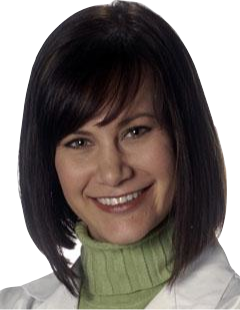(As seen on Fox 2 Detroit “The Ladies Room”)
We wake up in the morning, get out of bed, and start walking... Can you imagine how we could do that without our skeleton? Some might think of our bones as "sculpted" from stone or wood, but they actually are living tissue, constantly being remodeled!
Monday, October 20, 2008 was “World Osteoporosis Day,” which, according to the American Academy of Orthopaedic Surgeons, launches a two-year initiative to mobilize public opinion to generate change in osteoporosis health care policy!
What is Osteoporosis? Bone continuously is absorbed and deposited by cells in your body called osteoblasts and osteoclasts. These cells are triggered to act based on the amount of calcium, vitamin D, and parathyroid hormone in the blood. If too much calcium is absorbed, the bones become weaker. When bones weaken, they are susceptible to fracture (break). More than 1.5 million fractures each year are linked to osteoporosis, or porous bone!
Who Gets Osteoporosis? If you think you are immune, read on! Believe it or not, we all begin to lose bone mass around age 35. It is estimated that ten million people in the U.S. have osteoporosis and 18 million are at risk; 80% of those are women.
Why Do Women Get Osteoporosis More Than Men? Women ultimately lose more bone than men; the greatest rate of bone loss is during the postmenopausal period, when estrogen levels are low. Estrogen helps to maintain bone density. Other than low estrogen, several other factors related to osteoporosis include: aging, genetics, race (those of Asian and Caucasian ancestry are more at risk than African American and Hispanic origin), smoking, excessive alcohol intake, physical inactivity, and excessive cortisone or thyroid hormone. This is not to imply that male osteoporosis does not exist; this condition in men has been gaining recognition.
What Happens If I Get Osteoporosis? Every year, 1.5 million fractures related to osteoporosis are diagnosed, including 350,000 hip fractures. Fractures of the wrist, hip, and spine--sites of the greatest amount of bone loss--are most common as we age.
How Can I Prevent Osteoporosis? Although we haven't quite figured out how to change aging or genetics (!), the good news is that there are several causes on the list that we can control!
1. IT'S TIME TO QUIT SMOKING! You have heard about the effect of cigarette smoking on your heart and lungs, but did you know it is destroying your bones, too? If you ever have considered this, now is the time... your body deserves the best! Talk to your doctor about how to make this positive change.
2. "Everything in moderation." True, there are advantageous effects of alcohol on your health when consumed in moderation. However, excessive intake is detrimental to multiple organ systems, including your skeleton.
3. Remember that promise that you made to yourself to exercise? A regular fitness program benefits your whole body, and load-bearing exercise (weightbearing...meaning jogging, walking, dancing, etc. 3-4 hours per week) can increase your bone density dramatically!
4. Remember that promise that you made to yourself to eat right, too? Make sure that you are eating nutritious meals, specifically getting enough calcium and vitamin D! You need to give your body 1,000 mg of calcium each day, whether through dairy products or green leafy vegetables. The active form of vitamin D that is needed to maintain healthy bone is increased by sun exposure; however, if your life doesn’t involve much sun exposure, you might benefit from supplemental vitamin D.
5. Time for your physical exam? See your doctor and ask whether your hormone levels should be checked. There are ways to change levels that are "out of whack" so that your bones (and the rest of you) don't suffer. After menopause, you can lose 1 to 6 percent of your bone per year; ask your doctor whether you should have your bone density checked.
How Can I Help My Kids Prevent This from Happening to Them?
1. Between the ages of 10 and 20, we need 1,300 mg of calcium every day. Calcium can be found in milk (three 8 ounce glasses a day!), cheese, yogurt, or green leafy vegetables.
2. A young woman who has not started menstruating by age 16 or who has started but whose cycle has changed should talk to her doctor; circulating estrogen is necessary for bone health. Proper nutrition, exercise, and general health maintenance will help prevent injury and allow your bones to carry you as far as you want to go!
Dr. Rachel Rohde is an orthopedic surgeon who specializes in treatment of musculoskeletal conditions of the upper extremities including the shoulder, elbow, wrist and hand. A native of Michigan, she completed her training at Harvard Medical School, the University of Pittsburgh Medical Center, and Hospital for Special Surgery in New York City. She has published and presented her research at national and international conferences and recently authored a text, Acute Management of Hand Injuries. She is on staff at Beaumont Hospital in Royal Oak and is a partner in the Michigan Orthopaedic Institute.
